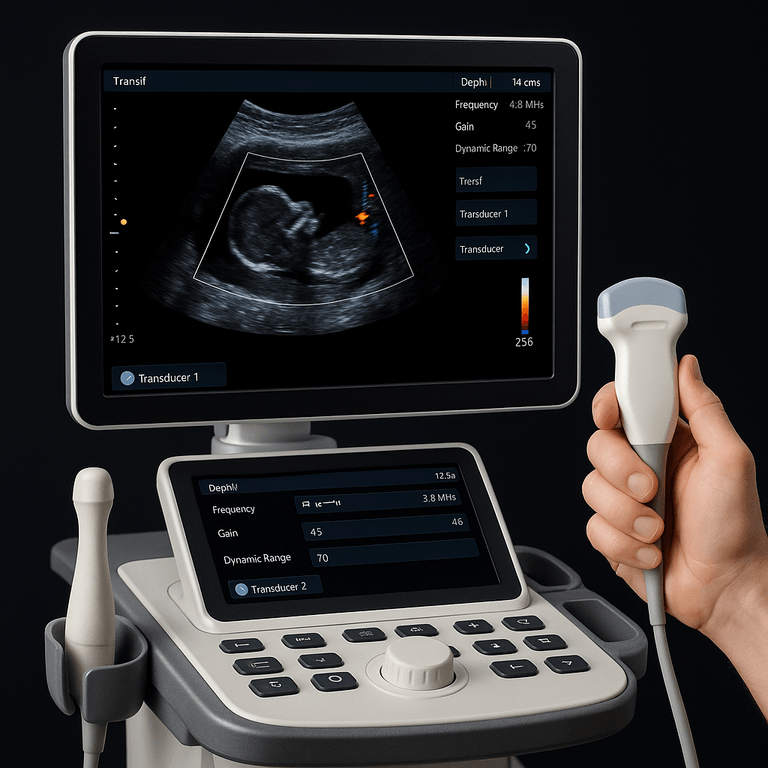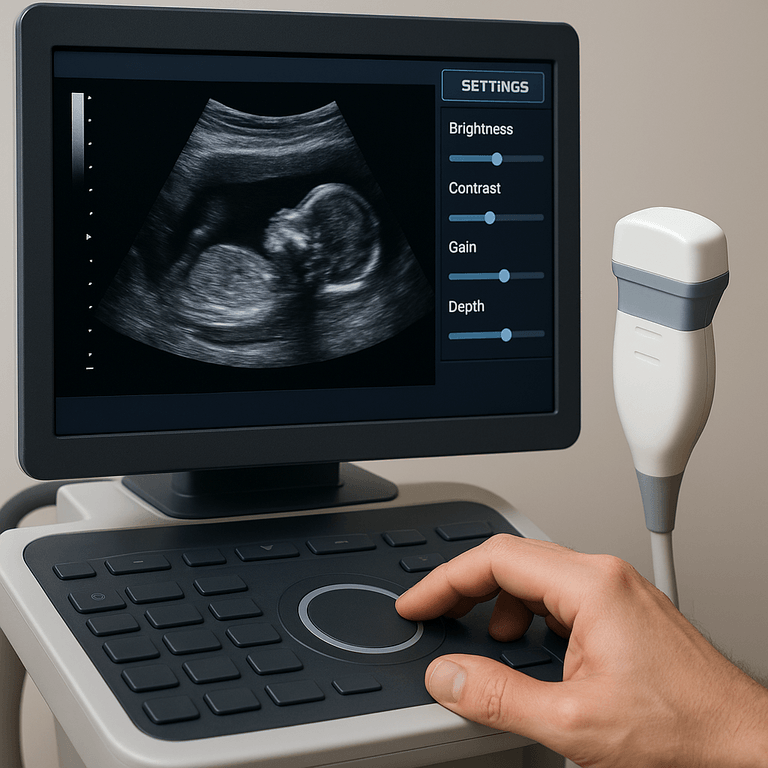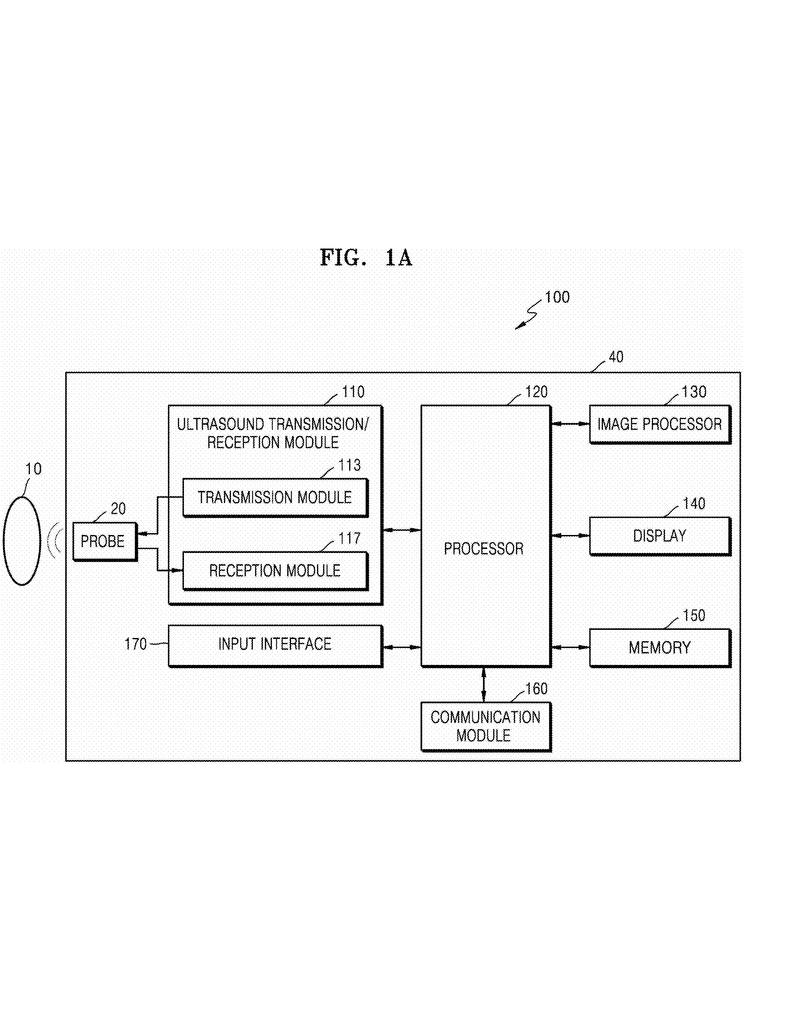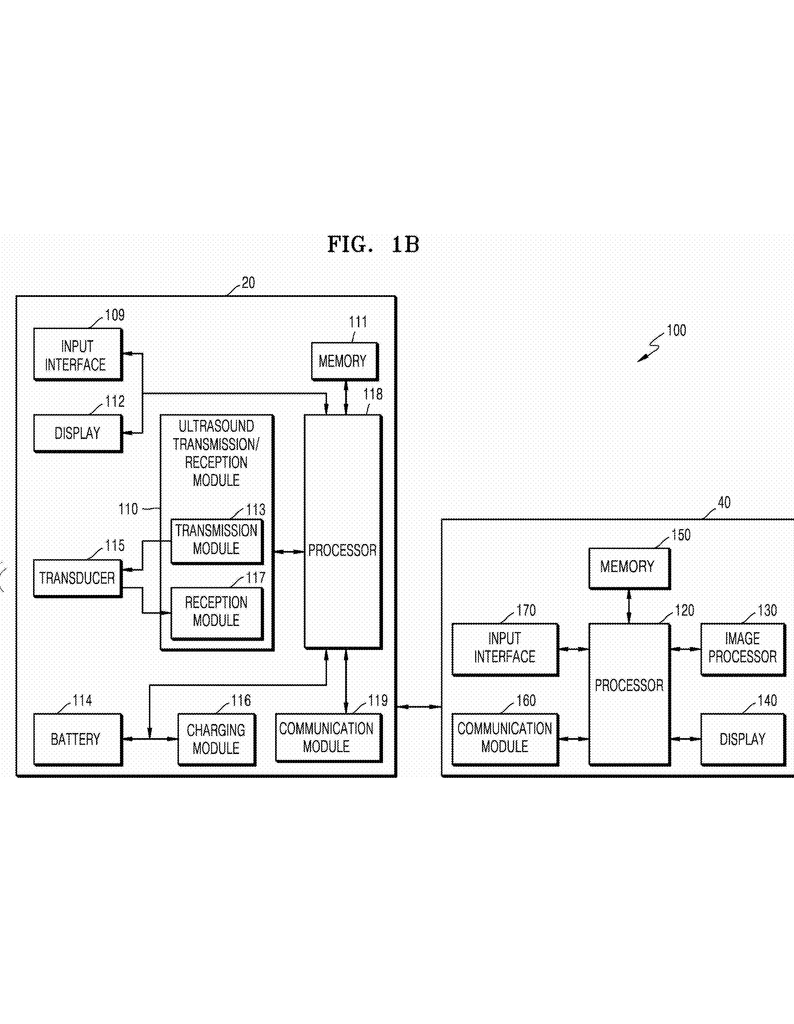Invented by SUNG; Jinho, LEE; Sungjae
Ultrasound technology is changing fast, and a new patent application is paving the way for smarter, clearer, and more flexible imaging. In this article, we’ll break down what this patent covers, why it matters, and how it stands out from older ideas. We’ll keep things simple and easy to follow, so you can understand how this invention can shape the future of medical imaging.
Background and Market Context
Ultrasound imaging is one of the most important tools in medicine today. Doctors use it to look inside the body in real time without surgery or harmful radiation. Ultrasound machines help with many things, such as checking a baby’s health during pregnancy, looking for injuries, and guiding doctors during surgery.
Many types of medical imaging tools exist, such as CT scans and MRI machines. Each has its uses, but ultrasound is special because it’s safe, quick, and can go almost anywhere. It’s found in big hospitals and small clinics. Even portable ultrasound devices are now common, helping doctors see patients in ambulances or faraway clinics.
But ultrasound isn’t perfect. Sometimes, the images are blurry or can’t show deep parts of the body very well. Sometimes, doctors have to switch between different probes or change machine settings to get the best picture. This can slow things down and make it harder to get the right diagnosis quickly.
Over the years, engineers have tried to make ultrasound machines better by using new materials, more advanced software, and clever ways to process the signals. Companies have also worked on making probes that do more than one job or can be used for many kinds of exams.
Still, there’s a need for systems that can automatically pick the best way to make a clear image, no matter what part of the body is being scanned or what the doctor wants to see. The market is also hungry for ultrasound tools that are easier to use, with less need for training or manual adjustments, so that even less experienced users can get good results.
As healthcare becomes more digital and connected, there’s also a push to make ultrasound machines smarter. This includes using artificial intelligence (AI) to help with image quality, measurement, and diagnosis. The goal is to make ultrasound faster, simpler, and more reliable, so it can help even more people around the world.
Scientific Rationale and Prior Art
To understand the new patent, it helps to know how ultrasound machines work and what has been tried before.
An ultrasound machine sends sound waves into the body using a part called a transducer or probe. When the sound waves bounce off tissues or organs, the probe picks up the echoes. The machine then turns these echoes into pictures that doctors can see on a screen.
There are many types of probes. Some are designed for shallow scans, like looking at blood vessels near the skin. Others are better for seeing deeper organs, like the liver or heart. The difference comes from how the probes are built and what frequencies they use. High-frequency probes show fine details but can’t go deep. Low-frequency probes reach deeper but don’t show as much detail.
Some ultrasound machines let users switch between probes or change settings like zoom, depth, and focus. However, changing probes or settings often means stopping the scan, reconnecting cables, or making several manual adjustments. This can break up the workflow and lead to mistakes or missed information.
In the past, engineers have made probes with multiple types of transducers inside a single shell. Some probes have both linear and convex arrays, letting users choose which one to activate. Others use advanced materials, like piezoelectric composites or micromachined elements, to improve performance.
There are also ultrasound systems that let users adjust parameters like frequency, gain, and dynamic range. Some machines have presets for different body parts or scanning tasks. But in most cases, the user is still responsible for picking the best probe or settings. If the wrong choice is made, image quality can suffer.
Recent advances have brought in some automation, like auto-focus or auto-gain. There are even AI tools that help identify organs or measure structures. But very few systems can automatically switch between different types of transducer arrays or change key settings in real time based on what the user needs to see.
The need for a system that can pick the best transducer array and settings on its own, based on user input like zoom or depth, has not been fully met. This is where the new patent application makes a big leap.
Invention Description and Key Innovations
This new patent application introduces an ultrasound imaging system that can automatically pick and activate the best transducer array based on what the user wants to see. It brings together several key features to make ultrasound imaging smarter, faster, and more helpful.
The heart of the invention is a system with at least two transducer arrays. Each array has different specifications—maybe they use different materials, shapes, or frequencies. For example, one array might be better for wide, deep scans, while the other is better for fine, close-up details.
When a user wants to change something about the ultrasound image—like zooming in, looking deeper, or shifting the area of interest—the system listens. The user gives input through a simple interface, like tapping a button or dragging a slider.
Here’s where things get clever: the system’s processor takes this input, figures out what settings are needed, and chooses which transducer array should be active. If the user’s request can be handled by changing the frequency of the current array, the system just tweaks the settings. But if the request needs a different kind of scan, the system switches to the other array, all by itself.
Let’s say a doctor starts with a deep scan using a convex array. If they zoom in a little, the system simply increases the frequency for better detail. But if they zoom in a lot, and a linear array would give a sharper close-up, the system swaps to the linear array automatically—no need for the doctor to unplug anything or change probes.
Even more, the system adjusts other settings like how many times it sends out sound waves, how it picks up echoes, and how bright or dark the image appears. It does this in a way that keeps the picture looking smooth, so there aren’t sudden jumps or confusing changes when switching arrays.
The patent also covers the use of advanced materials and designs for the transducer arrays. These can include classic piezoelectric materials, single crystals, polymers, or even tiny machines made with MEMS technology. This means the system can be built in many shapes and sizes, from large machines to tiny portable devices.
Another smart feature is the use of AI. The system can use artificial intelligence to check the quality of the image and make extra tweaks. For example, it might look at how similar the new image is to the old one, or watch for any unwanted changes in brightness. The AI can also help choose the best array and settings for each task.
To keep users informed, the system shows a guidance window on the display. This lets the doctor know when the system is optimizing the settings or has switched arrays. If needed, the user can turn off the auto-switching feature with a tap, giving them full control.
The patent also covers how the system’s parts work together. There are ways to connect and control the arrays and beamformers, whether the system uses separate or combined hardware for each array. The switching can happen through wires or wirelessly, making the system flexible for many types of machines—from hospital carts to handheld devices.
All these features add up to a system that makes ultrasound easier to use while delivering better images. Doctors don’t have to think about which probe or settings to use; the machine takes care of it. This saves time, reduces errors, and helps users at all skill levels get the most out of ultrasound technology.
Conclusion
This new patent application could change the way ultrasound imaging is done. By letting the system pick the best transducer array and settings automatically, it removes many of the barriers that slow down medical exams or make them harder for less experienced users.
With its support for multiple transducer arrays, smart switching based on user input, and built-in AI, the invention makes ultrasound imaging more flexible and powerful. It helps doctors get clearer pictures, faster and with less hassle—no matter where or how they’re working.
As ultrasound technology moves forward, inventions like this will help bring safe, high-quality imaging to more people in more places. The world of medical imaging is getting smarter, and this patent is a big step in the right direction.
Click here https://ppubs.uspto.gov/pubwebapp/ and search 20250213229.




